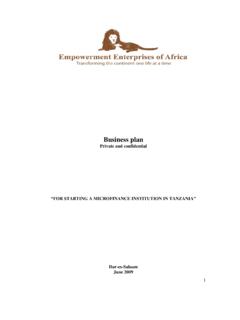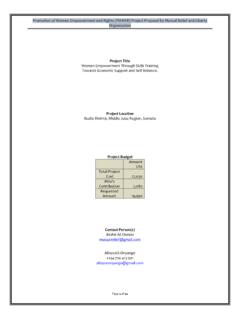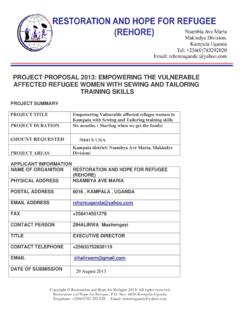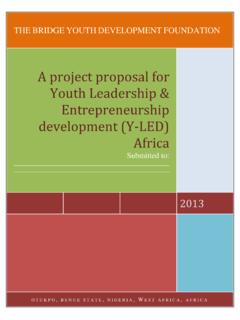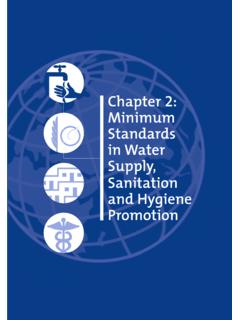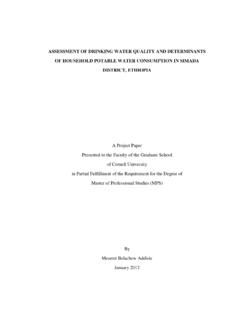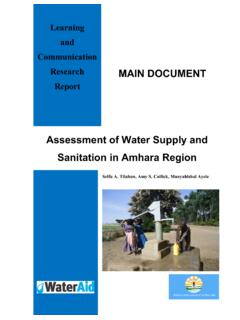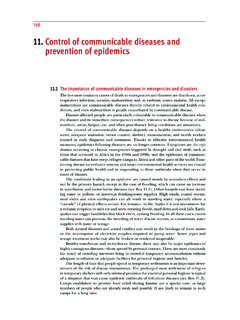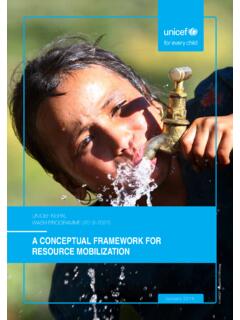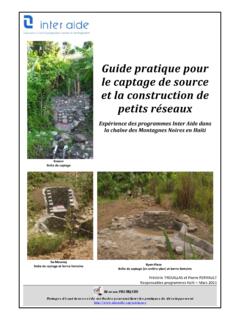Transcription of World Vision Water, Sanitation, and Hygiene (WASH) …
1 World Vision water , sanitation , and Hygiene ( wash ) ProjectsSaving Lives through Safe water , sanitation , and HygieneA REPORTJuly 2010 World Vision wash PROJECTST able of Contents1 Introduction1 wash Projects Goal and Objectives2 Glimpses of Success EthiopiaWe st A f ric aZambia7 With Deep Appreciation On the cover: Mary is one of many children in Chibiya, Zambia, whose smiles never wear out because they now have clean water thanks to a new well donors helped drill in their village. Above: Bricks that will be used to build sanitation facilities are baked in a Vision wash PROJECTSI ntroductionWater is one of the basic necessities of life. Safe water is especially critical for children, who are the most vulnerable to water -related diseases.
2 World Vision works in impoverished areas to provide potable water and adequate sanitation to decrease illnesses, improve health, and lessen the burden on women and children by reducing the distance to water collection points. In addition, suffi cient water increases crop production and thus the ability of parents to adequately provide for their children with better nutrition and income from the sale of Vision s water and sanitation programs help communities obtain adequate supplies of safe water and sanitation facilities by drilling new borehole wells, repairing existing wells, developing spring and rainwater catchments, providing water storage, building community fi ltration systems, and constructing household latrines, refuse dumps.
3 And surface water drainage ese initiatives become sustainable as community members are trained to repair and maintain pumps and water sources, and serve on water and sanitation committees that oversee community improvements. World Vision also initiates Hygiene education for children and adults, including proper hand and face washing to prevent the past 25 years, World Vision has helped provide clean water and improved sanitation to more than 10 million people. In fi scal year 2009(October 2008 to September 2009), individuals, corporations, and foundations in the United States supported World Vision water , sanitation , and Hygiene ( wash ) projects in 20 countries.
4 Th ese interventions are playing a vital part in helping to reach the United Nations Millennium Development Goal to halve, by 2015, the proportion of people without sustainable access to safe drinking water . Th is report provides recent details of World Vision s wash work around the and sanitation Projects Goal and ObjectivesTh e overall goal of World Vision s water and sanitation projects is to improve the health and socioeconomic well-being of communities by reducing the incidence of water - and sanitation -related diseases through sustainable safe water , sanitation , and Hygiene practices. Projects achieve this goal through four objectives: Increase access to sustainable, safe water and environmental sanitation for poor and vulnerable communities Reduce the prevalence of wash -related diseases, including trachoma, Guinea worm, and diarrheal diseases, through the promotion of personal Hygiene and environmental practices World Vision s Community Development ApproachWorld Vision s wash projects are implemented within World Vision community development areas.
5 This approach focuses on a cluster of communities in a contiguous geographic area. World Vision brings together stakeholders in the region to identify and prioritize community development concept typically integrates the sectors of clean water , primary healthcare, food security, education and literacy, and economic development. Research has shown that each of the successive stages in this progression effectively helps to cut in half the under-5 mortality rate in communities where social infrastructure is addition, where our witness can be fully expressed, World Vision seeks to intertwine meeting material needs with enhancing spiritual maturity. Just as our community development work is long term, the work we do to nurture individuals spiritually also is designed to have lasting, sustainable development model is unique because its programs are built on needs and strengths identified by local leaders and residents.
6 Community development areas are funded and staffed for 12 to 18 years, assuring long-term supervision and monitoring, leading to Vision wash PROJECTSI ncrease sustainability by promoting integrated water resources management at the local level, with a focus on maintaining the quantity and quality of drinking water Foster a new model of partnership and institutional synergy to ensure technical excellence, programmatic innovation, and long-term financial, social, and environmental sustainability in water management that can be replicated elsewhere Communities that are most vulnerable and have the least access to water and sanitation are chosen to receive wash interventions.
7 World Vision also works with community leaders to ascertain that residents are committed to helping to construct and maintain wash facilities. Glimpses of SuccessFollowing are some examples of World Vision projects in 31 percent of the rural population in the East African nation of Ethiopia has access to safe drinking water , and just 8 percent has improved sanitation , according to the World Health Organization. Th anks to donors like you, World Vision is working through its Ethiopia Rural water Project to prevent water - and sanitation -related disease and death by providing safe water to 340,000 people, and helping 170,000 of these individuals gain access to improved sanitation by the end of September 2011.
8 With support from the Conrad N. Hilton Foundation and other major donors, World Vision launched the Ethiopia Rural water Project in October 2006 to help improve the lives of poor and vulnerable rural populations in Ethiopia. In its fi rst fi ve-year phase, this project is implementing potable water supply , sanitation , Hygiene , and integrated water resources management activities in seven community development areas in Ethiopia. 2009 project accomplishmentsTh e chart on the following page details project accomplishments donors like you helped make possible during 2009, and from inception-to-date (October 2006 through December 2009). Th e 50 development surveys conducted to date are very important.
9 World Vision does these initial surveys to ascertain the best and most cost-eff ective water solution for a community, based on available natural resources such as under-ground springs, population size, and existing made-made water solutions such as hand-dug wells. Improving existing but inadequate resources (such as protecting an underground spring from pollution at its source) or utilizing hand-dug wells where the water table is high enough, helps reduce costs, accelerates success, and allows us to deploy drill rigs where they are most needed. Mothers and children are all smiles as they retrieve water from one of the 10 water points World Vision has drilled in Tonga Town.
10 More than 7,500 peoplewho live in the area used to gather water from an unprotected Vision wash PROJECTSAt left, family members in Ethiopia struggle to gather water from a remote watering hole. Above, villagers gather around a water supply point made possible through the Ethiopia Rural water Project. Thanks to donors like you, more people have access to clean, easily accessible water of Activities2009 AccomplishmentsInception-to-DateAccompli shments water supply Development water supply development surveys conducted 1950 Deep wells drilled615 Hand-dug wells constructed 720 Springs developed/capped 14 Miles of water supply pipeline laid water points (faucets)
